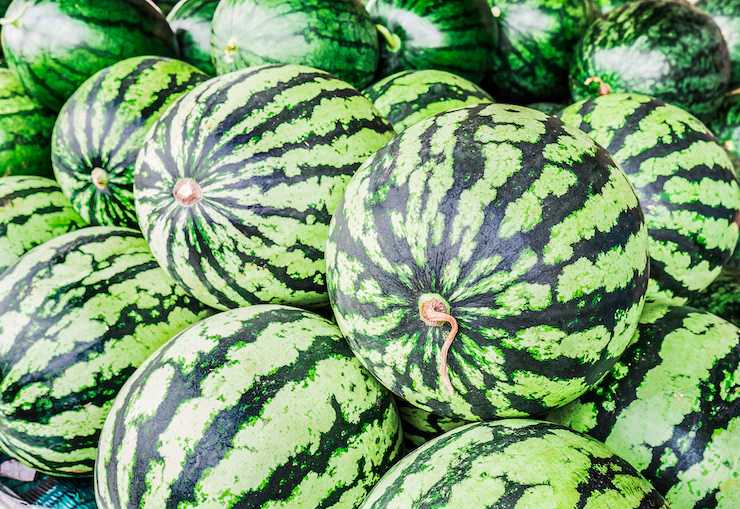When growing watermelons in South Africa, there are several infections and diseases that you should watch out for to ensure the health and productivity of your crop. Here are some common ones:
- Fusarium Wilt: Fusarium wilt is caused by a soil-borne fungus called Fusarium oxysporum. It causes wilting, yellowing of leaves, and eventual death of the plant. The disease can persist in the soil for several years, so crop rotation is essential.
- Anthracnose: Anthracnose is a fungal disease caused by Colletotrichum species. It primarily affects the leaves, stems, and fruits of watermelon plants. Symptoms include circular, sunken lesions with dark centers on leaves and fruit, leading to fruit rot. Proper sanitation, including removal of infected plant material, is crucial in managing this disease.
- Gummy Stem Blight: Gummy stem blight, caused by the fungus Didymella bryoniae, affects watermelon vines, leaves, and fruits. Symptoms include brown lesions on leaves, stem cankers, and sunken spots on fruits. Fungicides and regular scouting can help control the disease.
- Bacterial Fruit Blotch: Bacterial fruit blotch, caused by Acidovorax avenae subsp. citrulli, is a significant concern for watermelon growers. It affects the foliage and fruits, causing water-soaked lesions that turn dark and greasy. Crop rotation, seed treatments, and resistant varieties are management strategies for this disease.
- Cucumber Mosaic Virus (CMV): CMV is a viral disease that affects various cucurbits, including watermelons. It is transmitted by aphids and causes mosaic patterns, stunting, leaf distortion, and reduced yield. Implementing good aphid control measures, such as reflective mulches and insecticides, can help manage CMV.
- Powdery Mildew: Powdery mildew is a fungal disease caused by various species of the Erysiphales group. It appears as a white, powdery coating on leaves, reducing their photosynthetic ability. Fungicides and proper plant spacing to ensure good air circulation are important in controlling this disease.
- Phytophthora Blight: Phytophthora blight, caused by the water mold Phytophthora capsici, affects watermelon vines, leaves, and fruits. It causes water-soaked lesions on fruits, damping-off of seedlings, and wilting of vines. Crop rotation, fungicides, and well-drained soils are crucial for managing this disease.
To prevent the spread of these infections and diseases, it is essential to practice good cultural practices such as crop rotation, proper sanitation, and using disease-resistant varieties when available. Additionally, monitoring your plants regularly for signs of disease and implementing appropriate control measures can help minimize the impact on your watermelon crop. Consulting with local agricultural extension services or experts can provide you with specific recommendations tailored to your region in South Africa
Join 'Farmers Mag' WhatsApp Channel
Get the latest Farming news and tips delivered straight to your WhatsApp
CLICK HERE TO JOIN






